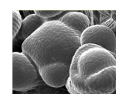2013- 2017: PIPER - European FP7 project (with INRIA Grenoble, UCBL, TUB, ITT, Univ. Southampton, GIE PSA Renault, Kunglia univ., PDB, CEESAR )
 |
Position and Personalize Advanced Human Body Models for Injury Prediction
In passive safety, advanced Human Body Models for injury prediction based on the FE method have the potential to represent the population variability and to provide more accurate injury predictions than alternatives using global injury criteria.
However, these advanced HBM are underutilized in industrial R&D. Reasons include difficulties to position the models – which are typically only available in one posture – in actual vehicle environments, and the lack of model families to represent the population variability.
The main objective of the PIPER project will be to develop new tools to position and personalize these advanced HBM. By facilitating the generation of population and subject-specific HBM and their usage in production environments, the tools will enable new applications in industrial R&D for the design of restraint systems as well as new research applications.
|
2012 - 2015: Morphogenetics - INRIA project (with INRIA Sophia-Antipolis, ENS Lyon, CEA)
 |
Morphogenetics is aimed at understanding how shape and architecture in plants are controlled by genes during development.
To do so, we will study the spatio-temporal relationship between genetic regulation and plant shape utilizing recently developed imaging techniques together with molecular genetics and computational modeling. Rather than concentrating on the molecular networks, the project will study plant development across scales. In this context we will focus on the Arabidopsis flower, currently one of the best-characterised plant systems.
|
2010 - 2014: SoHuSim - French ANR project (with INRIA Grenoble, Tecnalia, Silkan, CHRU Montpellier)
 |
Sohusim is a 4-years French national project dealing with the problem of modeling and simulating the soft mechanical interaction between human tissues and the environment.
The project will demonstrate a detailed active musculoskeletal model in interaction with an (inflatable) orthosis, and an active exoskeleton.
We aim at obtaining a tool to design devices in permanent contact with the human and determine the adequate ergonomics in terms of shape, positioning, material, through the simulation of the effect of prolonged pressure forces, the analysis of excessive friction zones, and the formation of bedsores and hurts.
|
2012 - 2013: Semyo - CNRS Peps (with INRIA Grenoble, Institut de Myologie Pitié-Salpêtrière)
 |
The goal of this project is to study MRI segmentation algorithms for the quantitative analysis of neuromuscular diseases.
|
2009 - 2010 : SHARE - INRIA associated team
 |
Simulation of virtual Humans and Animals interacting with Realistic Environments
|
2007 - 2010 : Grant from Canadian Institutes of Health Research
 |
Collaborative research: Neural and mechanical bases of motor primitives in voluntary frog behavior
|
2002 - 2007 : Co-Me - Swiss project
 |
The National Centre of Competence in Research (NCCR) Co-Me is a network of innovative scientists, engineers and surgeons. Established in 2001 by the Swiss National Science Foundation for a period of 12 years, it relies on several clinical and engineering sites located in Switzerland with strong links to industry and international partners.
|
2007 : 3d Anatomical Human - European project
 |
The objective of this network is to increase, by scientific exchange, the development of new technologies and knowledge around virtual representations of human body for interactive medical applications.
|







